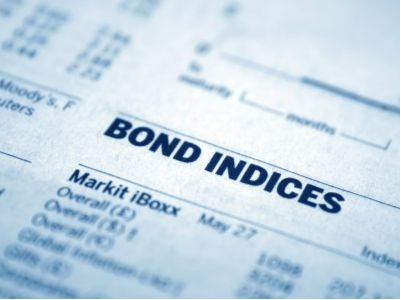Morgan Stanley Fund: The conditions for a bull market in A-shares have begun to take shape. Pay close attention to changes in company fundamentals in the future.
2024-11-13 21:12
Morgan Stanley Fund stated in a report that since the introduction of the "924" policy combination, A-shares have completed an amazing turnaround, quickly rebounding from the previous period of turbulence and correction.
Morgan Stanley Fund article stated that since the introduction of the "924" policy combination, A-shares have completed an amazing turnaround, quickly rebounding from the previous period of volatility. In just 6 trading days, the Shanghai Composite Index rose by more than 20%, the Shenzhen Component Index rose by more than 40%, and the ChiNext Index rose by more than 66%. With the return of market confidence, the medium to long-term trend of A-shares is expected to return to an upward trend. The bank believes that under this rapidly rising market, attention needs to be paid to several conditions for the future market evolution, focusing on the inflow of incremental funds in the short term and the improvement of corporate fundamentals in the medium to long term.
Reviewing history, since the year 2000, A-shares have experienced a total of 3 significant bull markets. In each major bull market, there have been similar situations where "positive policies + incremental funds + improved performance" have all played a role in shaping the market conditions in the short and long term.
Data source: Wind; Time period: 2000.1.7-2024.10.18; Index: Shanghai Composite Index. The three bull markets were marked by periodical new lows and highs as starting and ending points respectively, with specific time periods as follows: 2005/6/6-2007/10/16; 2012/12/4-2015/6/12; 2019/1/4-2021/12/13. Past market performance does not guarantee future results.
Each bull market has received support from various factors, with core factors including:
- The first bull market was mainly driven by the initiation of the shareholding reform and expectations of RMB appreciation leading to increased domestic liquidity.
- The second bull market saw reforms in the ChiNext board, the rise of the internet economy, and the entry of leveraged incremental funds.
- The third bull market was driven by overseas quantitative easing, the rise of the new energy industry, and strong demand for domestic substitution in the technology sector.
For this current market, the first two conditions are already in place: (1) a clear attitude towards the "924" policy combination, (2) market confidence leading to capital inflow. The improvement of corporate fundamentals has a certain lag and requires continuous observation.
Who leads the rally in each bull market?
From historical data, the leading industries in each bull market have been changing, reflecting the evolving focus of China's economic development. Initially, asset-heavy cyclical industries dominated, such as real estate and non-ferrous metals. This was followed by the rapid development of the internet, with computer and media industries leading. Subsequently, there was a major breakthrough in the new energy industry and strong demand for domestic substitution in the technology sector.
In summary, the leading industries in each bull market have generally been in alignment with the current focus of economic development or directly stimulated by favorable policies.
Data source: Wind; Time period: 2000.1.7-2024.10.18; Index: Shanghai Composite Index. The three bull markets were marked by periodical new lows and highs as starting and ending points respectively, with specific time periods as follows: 2005/6/6-2007/10/16; 2012/12/4-2015/6/12; 2019/1/4-2021/12/13. Past market performance does not guarantee future results.
How do fund managers view the future market?
In the latest quarterly report, Morgan Stanley Fund's Quantitative Investment Director and Manager of the Morgan Stanley Quantitative Multi-Strategy Stock Fund, Yu Bin, stated:
"I tend to believe that China's asset price recovery will be completed in a step-by-step and phased manner. The Fed's rate cut in September provided an important policy window for stabilizing asset prices in China.
With low inflation and social stability maintained, the second stage of asset price recovery will follow. The final stage of price recovery involves a systematic revaluation of Chinese assets. The premise of this revaluation is the proper resolution of debt issues for some economic participants, making it possible to enter a new credit expansion cycle.
At that time, emerging industries represented by new quality productivity and traditional industries with scarcity will undergo a systematic revaluation simultaneously."
In summary, the "darkest moment" has passed, and after a rapid rise, the market may enter a phase of increased volatility and polarization. It is not advisable to act recklessly, chasing highs and lows, as this may result in missing out on valuable opportunities and potential losses.
The market has arrived and is still in deficit, with seven billion-dollar funds still in deficit by over 30%, while there are also billion-dollar funds hitting historic highs.
Association of Private Equity Funds: In October, the number of newly registered private equity funds was 587, with a total registered capital of 22.946 billion yuan.
RECOMMEND

AMAC: In January, 137 new asset-backed special plans were filed, with a total scale of 1122.64 billion yuan.
26/02/2025

Schroder Investment: Investors should consider allocating funds to securitized credit and insurance-linked securities.
26/02/2025

Reuss County Asset Annual Reflection: Policy Tipping Point is very clear. The semiconductor industry in 2025 is a game for the brave.
26/02/2025


